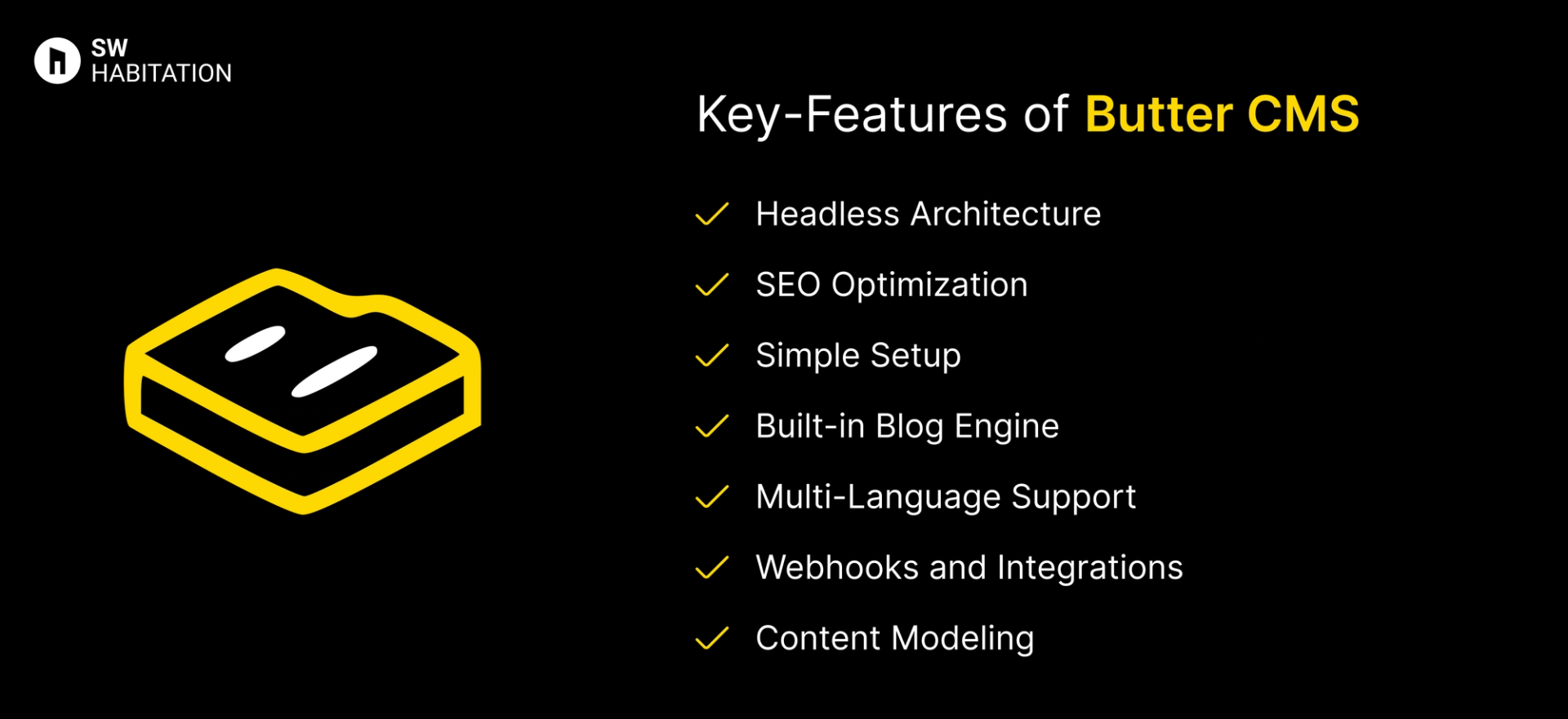DatoCMS vs. Butter CMS

DatoCMS

Butter CMS
You know, when you wanna make a website or a blog but don’t wanna mess with too much code? That’s where a CMS (Content Management System) comes in. It’s like a super easy tool that helps you add text, pictures, and videos to your site without needing to be a tech genius. You just log in, click a few buttons, and your content is live. It's quite simple, right?
What is DatoCMS?
DatoCMS is a headless CMS built to manage content and deliver it across websites, mobile apps, and beyond. It gives developers the flexibility to work with their favorite front-end frameworks while providing content creators with a clean, intuitive interface.
Whether you’re building a personal blog or handling a massive e-commerce website, DatoCMS simplified the process by providing a simple dashboard and robust API for content delivery.
Key Features of DatoCMS


- Roles and Permissions: Manage team access with fine-grained control.
- Integrations: Works well with Next.js, Gatsby, and other static site generators.
- Localization: Built-in support for multi-language content.
- Real-Time Updates: Content changes reflect instantly across all platforms.
- Headless Architecture: Deliver content anywhere using GraphQL or REST APIs.
- Media Library: Manage images, videos, and files with ease.
- Content Modeling: Design content structures that fit your project needs.
Advantages of Datocms
- Great for JAMstack: Integrates seamlessly with modern web technologies.
- User-Friendly: Clean UI for content editors — no technical knowledge required.
- Simple Setup: Get started quickly with minimal configuration.
- Scalable: Handles projects of all sizes, from small blogs to large applications.
- GraphQL Support: Fetch exactly the data you need with powerful queries.
Disadvantages of Datocms
- Learning Curve: GraphQL is powerful but requires some learning if you’re new to it.
- Paid Plans for Advanced Features: Features like advanced roles and high traffic require a paid plan.
- Limited Free Plan: The free tier has restrictions.
What is Butter CMS?
Butter CMS is a headless CMS, means it handles all your content in the backend and lets you pull it into your app or website via APIs.
Lets talk what makes Butter CMS stand out among others ? It focuses on simplicity. You don’t need to set up servers or worry about maintenance you need to just plug it into your project, and you’re good to go. It’s specially popular with startups and small teams who want a quick and easy CMS.
Key Features of Butter CMS


- Headless Architecture: Serve content anywhere with its API driven approach.
- SEO Optimization: It comes with SEO-friendly features out of the box.
- Simple Setup: No database or infrastructure required, just add a few lines of code, and you’re good to go.
- Built-in Blog Engine: Need a blog? Butter CMS has a pre-built blog system, which saves tons of development time.
- Multi-Language Support: Manage content in multiple languages easily.
- Webhooks and Integrations: Integrate easily with giant frameworks like Next.js, Vue, React, and more.
- Content Modeling: Create flexible content structures to fit your projects unique needs.
Advantages of Butter CMS
- Quick Setup: No need for complicated installations, just connect the API and good to go.
- Great for Small Teams: Simple, intuitive UI makes content management a easy to use thing.
- No Infrastructure Worries: Butter CMS handles the backend, so you can focus on the front-end things.
- SEO-Friendly: Built-in features help you optimize your content for search engines.
- Perfect for Blogs: It comes with a ready to use blog system.
Disadvantges of Butter CMS
- Not Ideal for Complex Apps: If your app requires super complex data relationships, Butter might feel a bit too simple to use.
- Limited Free Tier: The free plan is pretty basic, you’ll need to pay for more features if you need more flexibility.
- Pricing Can Add Up: As your content grows, so does the cost is also increase simultaneously.
Comparison Between DatoCMS vs Butter CMS
Use Cases of DatoCMS
- Teams with Editors and Developers: Editors get a clean UI, while developers enjoy the flexibility of GraphQL.
- JAMstack Lovers: Works seamlessly with static site generators like Next.js and Gatsby.
- Multi-Language Projects: Built-in localization makes managing translations easy.
- Content-Heavy Websites: Ideal for blogs, e-commerce, and marketing sites.
Use Cases of Butter CMS
- Blog Heavy Websites: Get a fully functional blog with minimal coding ahead.
- Marketing and Landing Pages: Quick to set up, making it ideal for marketing websites.
- Startups and Small Teams: No need for complex infrastructure.
- Projects That Need Fast Deployment: Minimal setup means faster launches.
Other Resources
Conclusion
Headless CMS platforms make managing your website very simple and easy. Whether you’re running a blog, online store, or business, they handle the tough stuff so you can focus on your content.
With a user-friendly interface and the ability to work with any technology, you can create a site that really fits your needs.
These platforms are flexible, secure, and can grow with you. They offer features like custom content, easy editing, and integrations with other tools. Choose the one that fits your requirements and start building your dream website today 🚀
Frequently asked questions
Is DatoCMS good for editors?
Yes, DatoCMS has an intuitive, user-friendly admin interface that’s designed for content editors. It’s easy to add, update, and manage content without needing to touch code.
Is DatoCMS free to start?
DatoCMS has a free tier for small projects. It’s great for personal or small business sites, offering a manageable amount of content and API calls before you need to upgrade.
Does DatoCMS have image optimization?
Yes, DatoCMS provides powerful image optimization tools right out of the box. You can resize, crop, and optimize images for faster performance and better user experience.
What frontend can I use with DatoCMS?
DatoCMS is frontend-agnostic, so you can use any framework or static site generator you prefer—React, Next.js, Gatsby, Vue, or even plain HTML. It's flexible to meet the needs of any project.
What makes butter cms special?
It’s super simple to set up and lets you add content to your site fast, without needing a backend.
Do I need a developer to use butter cms?
Nope, Not really. It’s beginner-friendly, but a developer can help with custom stuff if needed.
Is butter cms free?
It’s not free, but they offer a free trial so you can try it out first.
Can I use butter cms with React or Next.js?
Yup, It has APIs that make it easy to work with React, Next.js, and other frameworks.
Does butter cms supports SEO features?
Yup, you can add SEO stuff like meta tags and descriptions right from the dashboard.
